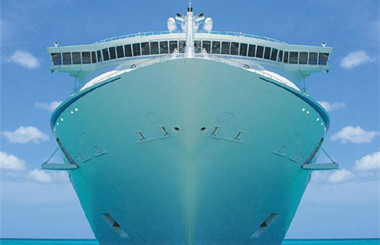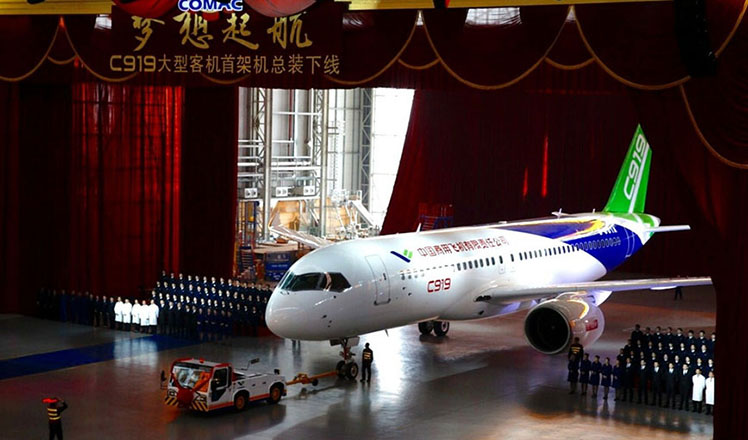Full Text: China Adheres to the Position of Settling Through Negotiation the Relevant Disputes Between China and the Philippines in the South China Sea
Updated: 2016-07-13 15:06
(Xinhua)
|
|||||||||
90. In September 2004, in the presence of the leaders of China and the Philippines, China National Offshore Oil Corporation (CNOOC) and Philippine National Oil Company (PNOC) signed the Agreement for Joint Marine Seismic Undertaking in Certain Areas in the South China Sea. In March 2005, national oil companies from China, the Philippines and Vietnam signed, with the consent of both China and the Philippines, the Tripartite Agreement for Joint Marine Seismic Undertaking in the Agreement Area in the South China Sea. It was agreed that during an agreement term of three year-period, these oil companies should collect and process certain amount of 2D and/or 3D seismic lines in the agreement area covering about 143,000 square kilometers, re-process certain amount of existing 2D seismic lines, and study and assess the oil resources in the area. The 2007 Joint Statement of the People's Republic of China and the Republic of the Philippines states that, "both sides agree that the tripartite joint marine seismic undertaking in the South China Sea serves as a model for cooperation in the region. They agreed that possible next steps for cooperation among the three parties should be explored to bring collaboration to a higher level and increase the momentum of trust and confidence in the region."
91. Regrettably, due to the lack of willingness for cooperation from the Philippine side, the China-Philippines Experts Group Meeting on Confidence-Building Measures has stalled, and the China-Philippines-Vietnam tripartite marine seismic undertaking has failed to move forward.
IV. The Philippines Has Repeatedly Taken Moves that Complicate
the Relevant Disputes
92. Since the 1980s, the Philippines has repeatedly taken moves that complicate the relevant disputes.
i. The Philippines attempts to entrench its illegal occupation of some islands and reefs of China's Nansha Qundao
93. In China's Nansha Qundao, the Philippines started in the 1980s to build military facilities on some islands and reefs it has invaded and illegally occupied. In the 1990s, the Philippines continued to build airfields and naval and air force facilities on these illegally-occupied islands and reefs; centered on Zhongye Dao, the construction has extended to other islands and reefs, with runways, military barracks, docks and other facilities built and renovated, so as to accommodate heavy transport planes, fighter jets and more and larger vessels. Furthermore, the Philippines made deliberate provocations by frequently sending its military vessels and aircraft to intrude into Wufang Jiao, Xian'e Jiao, Xinyi Jiao, Banyue Jiao and Ren'ai Jiao of China's Nansha Qundao, and destroyed survey markers set up by China.
94. Still worse, on 9 May 1999, the Philippines sent BRP Sierra Madre (LT-57), a military vessel, to intrude into China's Ren'ai Jiao and illegally ran it aground on the pretext of "technical difficulties". China immediately made solemn representations to the Philippines, demanding the immediate removal of that vessel. But the Philippines claimed that the vessel could not be towed away for "lack of parts".
95. Over this matter, China has repeatedly made representations to the Philippines and renewed the same demand. For instance, in November 1999, the Chinese Ambassador to the Philippines met with Secretary of Foreign Affairs Domingo Siazon and Chief of the Presidential Management Staff Leonora de Jesus to make another round of representations. Many times the Philippines promised to tow away the vessel, but it has taken no action.
96. In September 2003, upon the news that the Philippines was preparing to build facilities around that military vessel illegally run aground at Ren'ai Jiao, China lodged immediate representations. The Philippine Acting Secretary of Foreign Affairs Franklin Ebdalin responded that the Philippines had no intention to construct facilities on Ren'ai Jiao and that, as a signatory to the DOC, the Philippines had no desire to and would not be the first to violate the Declaration.
97. But the Philippines did not fulfill its undertaking to tow away that vessel. Instead, it made even worse provocations. In February 2013, cables were lined up around that grounded vessel and people on board bustled around, making preparations for the construction of permanent facilities. In response to China's repeated representations, the Philippine Secretary of National Defense Voltaire Gazmin claimed that the Philippines was simply resupplying and repairing the vessel, and promised that no facilities would be built on Ren'ai Jiao.
Related Stories
Chinese defense minister rejects South China Sea arbitration award 2016-07-13 14:09
Serbia supports peaceful resolution of South China Sea dispute 2016-07-13 14:08
Czech expert warns US and the Philippines not to play fire in South China Sea 2016-07-13 13:49
Overseas Chinese urged to support sovereignty for South China Sea 2016-07-13 11:19
Net users angry at tribunal's ruling over South China Sea 2016-07-13 11:14
Wider support for China's South China Sea stance 2016-07-13 10:25
Today's Top News
Ruling inherently biased and unjust 'piece of paper'
Tribunal issues ill-founded award on South China Sea
Theresa May set to be UK's next PM after rival quits
Chinese participation at UK air show biggest ever
2 gored in bull run; bullfighter killed
G20 economies to improve global trade governance
Suspect in Dallas attack wanted to 'kill white people'
5 Dallas police killed at protest against police shooting
Hot Topics
Lunar probe , China growth forecasts, Emission rules get tougher, China seen through 'colored lens', International board,
Editor's Picks

|

|

|

|

|

|







